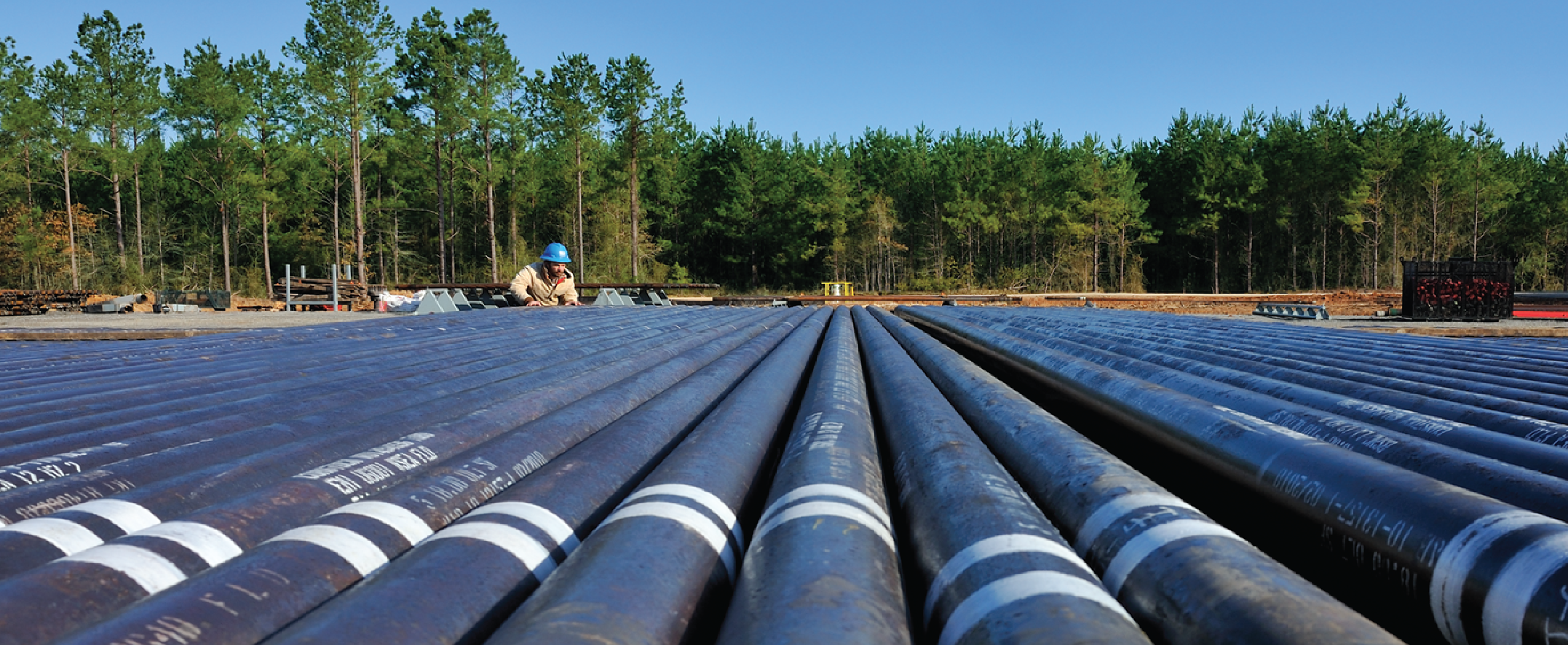
Current
drilling operations are now fueled predominantly by cleaner burning natural gas rather than diesel
fuel.
|
Air
- As an operator involved in onshore and natural gas production, Comstock is subject to regulation under
the Mandatory Greenhouse Gas Reporting Rule as promulgated by the United States Environmental Protection
Agency (EPA).
- As of 2019, we began an initiative to utilize natural gas fueled rigs in our drilling operations,
whenever possible. These rigs are capable of utilizing cleaner burning natural gas to power the rigs
rather than conventional diesel fuel. As a result, current drilling operations are now fueled
predominantly by cleaner burning natural gas rather than diesel fuel. This change has and will continue to
reduce our overall emissions
going into the future.
- We utilize solar energy sources at many of our production sites to reduce emissions.
- Comstock has been actively engaged in a LDAR program since 2016 in which fugitive emissions surveys are
conducted with the use of optical gas imaging technology. These surveys are conducted on a periodic basis
and leaks are repaired in a timely manner, in most cases immediately. Repairs are confirmed with industry
accepted confirmation practices.
- Comstock follows the “green completion” practices that have become industry standard in the US. We
install pipeline infrastructure ahead of completing our wells which eliminates the need to flare gas
during initial production.
- Comstock recently engaged with The Environmental Partnership. This partnership comprises numerous
industry-leading oil and gas companies with a common goal of sustainable operations and reducing
emissions.
|
|

|

Comstock is
committed to
protecting groundwater sources
|
Water
- Comstock is committed to sound engineering practices and recognized industry standards to ensure
wellbore integrity is suitable to protect groundwater sources. Casing designs follow API standards to
ensure mechanical integrity during the drilling, completion, and long-term production life of the well.
Multiple casing strings, corrosion inhibiting treatments, and packer/tubing isolations are often used to
manage and maintain wellbore integrity on a regular basis. Our field operators regularly monitor casing
pressures to ensure proper and safe operation of our wells.
- Before drilling operations take place, we perform baseline water well sampling on our rig supply wells
utilizing an approved, third-party company.
- In recent years, we have improved our completion designs and reduced our freshwater use volumes for
hydraulic fracturing by approximately 30%. We have experienced reductions as much as 300,000 barrels of
freshwater per 10,000 foot lateral.
- To protect surface and ground water sources, Comstock has implemented the use of closed loop systems
during operations involving oil based drilling fluids.
|
|
Waste
- Oil based cuttings generated from the drilling process are diverted from a landfill to treating and
recycling facilities where practicable. Over the past 5 years, we have recycled over 8,400,000 gallons of
oil based drilling mud that would otherwise end up in a landfill.
|
|
Emergency Response
- Comstock trains our employees on an annual basis to prepare them for emergency spill situations.
- We also maintain agreements with 3rd party emergency response contractors to ensure resources and
manpower are available on a “turn-key” basis.
- Emergency shut down systems are utilized to quickly and remotely shut down operations in the event of a
release.
- SCADA systems allow our operators to remotely monitor onsite conditions, such as pressures, tank levels,
flow rates, etc., that may indicate upset conditions at facilities.
|

New sites undergo
extensive wetland, endangered species, cultural and historical resource reviews
|
Land
- Wherever possible, Comstock employs multi-well locations and extends the lateral lengths of wells to
minimize our above-ground footprint and reduce rig move traffic. This reduction in traffic means making
the roads safer, using less fuel for transports, and less noise and activity in communities.
- We work closely with 3rd party subject matter experts who perform extensive reviews for wetlands,
threatened/endangered species and historical cultural resources before construction can begin on a new
site.
- We strive for timely pit closure in efforts to quickly reduce our long-term pad footprint.
|




